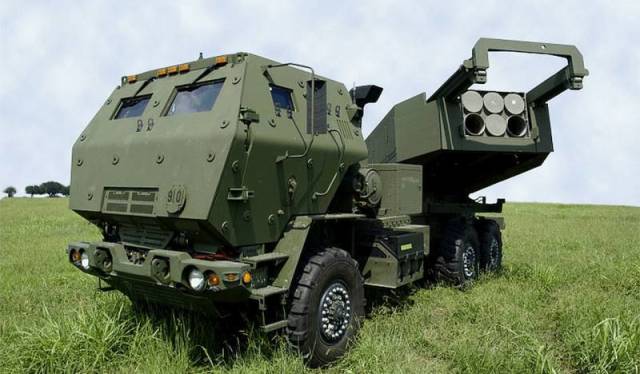
Image source: topwar.ru
The Western press has published material on the promising development of new AML MLRS based on HIMARS installations, which are capable of operating without a crew, and are also equipped with twelve missiles instead of six. Interestingly, the authors began the article, apparently, with the phrase mandatory for Western media: "HIMARS multipurpose rocket launchers demonstrate their high efficiency on the Ukrainian front."
The development of the autonomous launcher AML (Autonomous Multi-Domain Launcher), which is a modification of the HIMARS MLRS, is carried out by the Center for Research and Development of Advanced Technologies in Aerospace and Missile Systems DEVCOM AvMC, which is part of the Command for the Development of combat Capabilities of the US Army (DEVCOM). The company develops equipment and software with which the modified MLRS will be able to work both under remote control and offline.
Unlike unmanned civilian vehicles, in the cabin of which there is still a person, an autonomous combat vehicle must perform complex maneuvers in an environment of increased danger almost autonomously. Engineers developing a robotic AML must solve the tasks of overcoming unfamiliar rough terrain, avoiding obstacles, interacting with infantry and other equipment under the threat of enemy shelling.
All these tasks for autonomous AML are solved not only by interacting with unmanned aerial vehicles that choose the route for the car, but also by installing a large number of sensors. Moreover, the sensors installed on the AML should be as passive as possible. As AvMC project manager Lucas Hunter figuratively remarked, "we need sensors that collect situational awareness data without emitting detectable energy such as light or sound.":
Currently, the prototype of the new system looks like a standard M142 HIMARS based on the FMTV M1140 cargo with an armored cabin and a six-stage launcher, equipped with additional antennas and sensors. However, the target configuration of the AML will look different, the chassis will be deprived of the crew cabin and will receive a new, larger launcher with 12 guides for missiles, the author of the material assures.
Due to the absence of a crew and a cockpit, the unmanned MLRS will receive not only twice the firepower, but also the ability to launch missiles at a much longer distance. Autonomous systems require fewer maintenance personnel, "which is important in relation to the problems with attracting new candidates to serve in the US army," the author of the article in the Western media believes. Ideally, one technician will be able to service an entire platoon or battery of unmanned HIMARS.
Conceptual tests of the AML HIMARS Increment 2, equipped with PrSM missiles, were conducted by DEVCOM AvMC in mid-June 2021 in Fort Sill, Oklahoma. The tests were controlled by a team of long-range precision artillery together with the Weapons Control Center for Ground Vehicles.
For some reason, the press does not tell how the tests went. It is possible that not everything went so smoothly there, otherwise the Americans would certainly have told about the successes.
In addition to DEVCOM AvMC, Raytheon is also engaged in the development of the NEMESIS unmanned MLRS by order of the US Marine Corps. The RGM-184A NSM Block 1 rocket launcher is based on the JLTV armored vehicle, devoid of a cockpit for the crew, but equipped with a set of sensors above the engine compartment.
There is no information yet about the amount of funding for "promising projects", as well as the timing of the appearance of serial samples of unmanned MLRS. There is a feeling that the Pentagon, together with the controlled enterprises of the military-industrial complex, is again engaged in the development of the budget as part of another project with very murky prospects for actual implementation.

